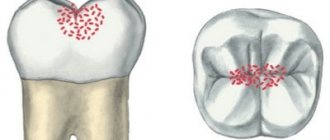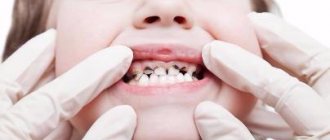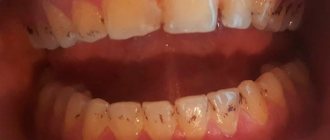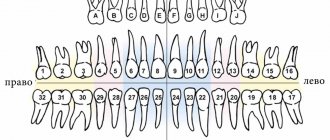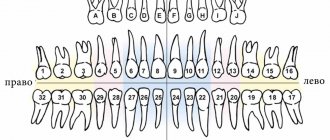Dr. Niklas Bartling (Dr. Niklas Bartling) doctor, private practice, Altstatten (Switzerland)
Flowable Bulk-Fill composites are intended for restoration of the dentin layer of class I and II restorations. The article presents a treatment concept that features optimal restoration technology, high efficiency and good esthetics, making it also ideal for pediatric dentistry.
Filling chewing primary teeth damaged by caries with composites - in comparison with other materials - has long been considered very expensive. With the development of Bulk-Fill technology, the situation has changed dramatically. The labor-intensive layer-by-layer filling of the cavity with filling material has in most cases been reduced to the formation of the entire filling with just one layer. The newly developed Tetric® EvoFlow Bulk Fill composite is designed for exactly this purpose. In combination with other components from lvoclar Vivadent, it allows effective treatment of young patients.
Filling for a child - high quality, pain-free and at an affordable price
Most parents are reluctant to visit the dental office with their children. They perceive this as stress for the child, since they clearly remember their own childhood. In their memories, the dentist is a doctor with a stern look, cold hands and an arsenal of instruments for torture. Fortunately, pediatric dentistry looks very different today.
At the Natadent dental clinic, dental fillings for children are performed by qualified doctors, whose professionalism is manifested not only in high-quality treatment, but also in the ability to find an approach to young patients.
The following features of our clinic help us make treatment comfortable for the child:
A children's playroom where the doctor gets to know each other and spends time in a playful way with the baby before the appointment.
- friendly atmosphere in the office, preliminary communication and explanation of all the intricacies of treatment.
- use of modern tools and materials;
- local anesthesia, sedation and general anesthesia (if necessary);
- colored fillings and other playful ways to motivate a child;
- gifts after each reception
- cartoons during treatment
If you want your child to have healthy teeth and not be afraid of the dental office in the future, bring him to the Natadent clinic. Our doctors perform dental fillings for children quickly, efficiently and in a fun way. Thanks to this, the child will not be afraid and will remember that dental treatment is a short, painless and very important procedure.
Advantages of SM-Dentistry
- Qualified pediatric dentists The best dentists in Moscow work here, having extensive experience in treating children. Knowing the basics of child psychology, doctors establish trusting relationships with the little patient and carry out all therapeutic and diagnostic manipulations in a playful manner. This avoids fear and stress in the child. Our dentists explain in an accessible manner the importance of treatment and teach the child how to properly perform hygiene procedures.
- Comprehensive services We monitor the oral health of our patients from the moment the first tooth appears. Regular preventive examinations make it possible to identify diseases in the early stages, when treatment can be carried out quickly and painlessly. We perform dental fillings under local anesthesia (application + injection), under sedation (if the child is anxious) or under anesthesia (if several teeth need to be treated at once). Thanks to qualified anesthesia, these procedures are absolutely safe for children.
- The best materials Doctors use advanced equipment and certified materials from world-famous manufacturers in their work. We use only those medications that are registered in our country and are absolutely safe for the youngest patients.
You can find out more details and sign up for a consultation with a specialist by calling: +7
, or by filling out the form:
Filling baby teeth
Many mothers are sure that it is not necessary to treat baby teeth, since they are still temporary. And if caries begins to cause severe discomfort to the child, the baby tooth can be removed and you can calmly wait for the permanent one to grow. In reality, primary teeth need to be treated with care and should be treated until they fall out naturally.
Filling baby teeth is necessary because throughout their existence they perform important functions:
- help the child chew food better;
- prepare a place for permanent teeth;
- help to form the correct bite;
- necessary for pronunciation;
- participate in the formation and growth of jaws.
A child needs the ability to chew food well to be healthy and cheerful. Even small caries can form a bad habit of swallowing insufficiently chewed food in chunks. Therefore, filling teeth for children should not be postponed until later. Timely treatment will allow the child to eat better, pronounce words clearly and avoid bite problems.
Light fillings for a child
Modern photopolymer materials used in the Natadent clinic can make dental treatment a quick and comfortable procedure, even for children. There is no need to doubt whether light fillings can be given to a child. The materials we use are absolutely harmless and do not affect children's health.
The main advantages of light fillings:
- Affordable price. Photopolymer fillings, despite all the advantages, are relatively inexpensive.
- Long service life. Contrary to popular misconceptions, light-curing fillings are strong and durable.
- Fast curing. Under the influence of special radiation, the material hardens in just a minute. Thanks to this, it is possible to place several fillings in one visit.
- Minimal tooth preparation. The viscous consistency of the polymer material allows it to reliably attach to chipped enamel and other surfaces after minimal processing.
- Completely harmless. High-quality photopolymer material is completely safe for children.
The use of light-curing materials greatly simplifies filling teeth for children, since it is difficult for a child to sit in one place for a long time (especially in a dental chair). The light filling is installed and hardens in minutes, allowing you to fill multiple teeth in one visit.
Features of the choice of materials
When choosing materials, the following criteria must be taken into account:
- safety, compatibility with natural tissues;
- high levels of strength, elasticity, hardness, the ability to quickly recreate the natural shape of the unit;
- aesthetics;
- the size of the pathology, the location of the cavity and the requirements for correction or restoration;
- light or chemical method of material hardening;
- price;
- degree of tissue preservation.
Service life depends on the material used. Most often, it is 2-10 years for a standard filling, 2 years for phosphates, 3-4 for composites and silicate, 4 years for glass polymers. The longest periods are observed for self-curing composites and photopolymers – 10 years. At the same time, the duration is influenced by such factors as the presence of loads, the size of the pathology, compliance with the rules of oral care and diet, and regular visits to the dentist for preventive examinations.
Temporary filling for a child
In certain situations, it is necessary to place a filling, the only task of which is to stand for several days, closing the hole in the tooth. Typically, temporary filling of teeth for children is carried out using inexpensive, quick-hardening materials. They are not very durable, but they do their job perfectly, reliably protecting the tooth cavity from microorganisms and preventing pain due to the ingress of food particles.
A child’s temporary filling can be placed on a baby tooth that is at one of the stages of treatment. It is also placed if the doctor needs to make sure that the tooth is cured and will not hurt. In this case, after a few days the temporary filling is replaced with a permanent one (or additional measures are taken to treat the tooth).
Diseases that can be treated with dental fillings
Tooth decay is a major problem that can be solved with dental fillings. However, caries is a slow and irreversible process that affects the tooth enamel, cavity and bone of the tooth.
The main reasons for its development are:
- cariogenic bacteria that take part in the formation of dental plaque. It is dental plaque that contributes to the rapid development of caries, since it contains a number of acids that are dangerous to tooth enamel, such as lactic, formic, propionic and butyric.
- fermentable carbohydrates (fermentation of carbohydrates is carried out with the help of bacteria that fill the oral cavity, as a result of which the same dental plaque is formed, containing acids that change the pH balance and contribute to the destruction of enamel).
Primary caries is characterized by the formation of a chalk spot, which subsequently transforms into a carious cavity. In general, this disease is treatable at any stage. At the same time, the only effective method of treating caries of any severity is dental filling.
However, when entrusting yourself to the hands of a dentist, it is worth remembering that a poor-quality filling or unscrupulous filling of a carious cavity often becomes the cause of further development of caries, which can be accompanied by complications. The most painful of them are pulpitis and periodontitis.
The specialists of the Nutcracker family dental clinic are doctors of the highest category and have many years of experience in dental treatment. In addition, when you contact us for dental fillings, you receive a one-year guarantee on each filling!
Dental treatment under anesthesia
General anesthesia is an effective way to make the treatment process as comfortable as possible. The child simply falls asleep and wakes up with healthy teeth. Thanks to this, the next time he will not feel afraid before visiting the dental office.
Dental filling for children under anesthesia is preferable in the following situations:
- treatment will last more than an hour;
- it is assumed that the procedure will be painful (when treating distant teeth or advanced caries);
- you need to fill several teeth at a time;
- local anesthesia is not possible (for example, due to allergies);
- it is not possible to place a filling on the child, since any actions in the oral cavity cause a gag reflex;
- unable to overcome panic fear of treatment.
The Natadent dental clinic employs qualified anesthesiologists who will calculate the dose of the drug with maximum accuracy. Thanks to this, the child will wake up immediately after the procedure, and drowsiness will pass very quickly. Modern drugs are completely safe and are used in the treatment of children over 3 years old, so any worries about the consequences are unnecessary.
What components (materials) are used
Glass ionomer cement and amalgam fillings are a thing of the past. Today, pediatric dentistry has a considerable range of modern, high-quality and harmless materials. For fillings, light-curing composite materials are used, and for the youngest, dentists offer an alternative - multi-colored fillings consisting of glass ionomer cement with a hybrid composite. Installing colored fillings turns treatment into a game. The child can independently choose one of the seven colors presented in the line of material. In addition, these fillings saturate the teeth with fluoride and prevent the development of caries.
Reviews
Taking your child to the dentist’s office is an important undertaking, because in childhood a lifelong attitude towards one’s own health is formed. Therefore, we make every effort to ensure that young patients and their parents have only positive emotions after dental treatment. You can judge this by reading the reviews about the Natadent clinic left by our clients.
We will be grateful if you also leave a review describing your impressions of the visit. This will be an excellent hint for us about which aspects of our work are especially important for young patients and their parents. We strive to be the best and are happy to improve with your help!
Colored fillings for children
Everyone knows about the need for preventive visits to the dentist, but not only children, but also adults themselves are often afraid to cross the threshold of the clinic, having had negative dental experiences in childhood. But the longer you postpone the visit, the larger the problem and the longer the treatment may be.
First meeting with the dentist
It is recommended to introduce the baby to the doctor as early as possible, explain that the doctor cares about his teeth and is ready to tell him how to care for them. If you bring a child to the dental office for the first time with already advanced caries and acute pain, then such an appointment will definitely not leave a pleasant impression. In the future, dental phobia (fear of treatment at the dentist) and a negative attitude even towards preventive measures may develop. Parents should understand that modern equipment and materials make treatment almost painless, and pleasant little things can distract and even please the child. This approach will be the key to a beautiful and healthy smile, as well as a positive attitude towards visiting the dental clinic.
Why do you need to treat baby teeth?
It is a common belief that baby teeth do not need treatment, since they will fall out sooner or later anyway. But this idea of parents is wrong. And there are several reasons for this:
- milk teeth, like permanent teeth, are designed to perform a chewing function and provide a uniform load: their absence can negatively affect the digestion process, speech development or diction;
- early loss or removal of an affected tooth can adversely affect the bite in the future, which means that orthodontic treatment will be required;
- the roots of baby teeth come into contact with the rudiments of permanent teeth, so diseases of the former can affect the latter.
Only regular preventive measures and timely treatment of diseases will help to avoid these problems. It is necessary to see a doctor urgently if you notice dark or whitish spots on the teeth, bad breath, swelling of the cheek, or if the child himself complains of pain or discomfort.
What are colored fillings
Even if a child is calm about visiting a dental clinic, he is unlikely to enjoy the treatment process itself. In this regard, specialists from different countries are constantly trying to come up with new ways to make the procedure more comfortable and even positive. One of the most successful solutions is the use of colored fillings. Such material can interest a small patient and even improve his mood.
For adults, this idea may seem a little absurd, because we all strive to hide the defect that has appeared as much as possible, and choose a filling that matches the color of our own tooth. Children see this as a game: colorful spots on their teeth seem fun to them and express their individuality and preferences. In addition, the process of choosing a color can distract the child from unpleasant manipulations. And how great it is to then show off to your friends such a “new thing” and the fact that it was not scary at all! The color scheme will also please young fashionistas. There are usually seven bright colors in a dentist's arsenal: orange, blue, pink, yellow, green, silver and gold. If you plan to treat several teeth at once, you can collect a small collection.
Benefits of installing a colored filling
Compomer is used to make colored fillings. It consists of glass ionomer and photopolymer. The first helps saturate the enamel with fluoride and gives the filling high adhesion, the second provides strength to the material.
The use of colored fillings in pediatric dentistry has a number of advantages:
- they are bright and cheerful, creating a positive impression on the child;
- the material from which colored fillings are made ensures quick filling from capsules;
- long service life - up to 3 years.
But still, the main advantage of colored fillings is the positive perception of the child. Children cease to be afraid of the dentist and evaluate the treatment itself as the acquisition of a new piece of jewelry. In addition, they increase interest in the process of dental care, because the child wants to keep his colored fillings for as long as possible.
How does the filling installation process work?
The whole point of filling, both when using regular and colored fillings, comes down to removing damaged tissues and replacing them with artificial ones. In any case, one goal is pursued - to preserve the functionality and aesthetics of a baby tooth for a longer period.
The filling process takes place in several stages:
- The area around the tooth is numbed. To do this, the doctor uses a suitable anesthetic with a precisely calculated dosage. If a child is afraid to give an injection right away, he is offered to anoint his gums with “fruit chill”.
- Then the dental cavity is thoroughly cleaned of damaged tissue. For these purposes, a drill, laser or sandblasting tools are used.
- During the treatment process, it is important to check the condition of the pulp. If it is not damaged, then disinfection is carried out. If the pulp is inflamed, a decision is made to remove it.
- After the doctor makes sure that the caries has been removed, the tooth cavity is cleaned of bacteria. At this stage, a special gasket is also installed that will protect the nerve from the applied filling material.
- Finally, the filling itself is carried out with the material of the selected color. It is applied in even layers. To make the filling hard, it is exposed to a special light. After this, polishing and grinding are carried out.
Caring for fillings on baby teeth
After installing a colored filling on a baby tooth, you need to follow some of the doctor’s recommendations. This will help the material harden properly and serve its little owner longer. It is also important to tell your child what not to do so as not to damage the filling.
General recommendations for caring for fillings include the following:
- In the first days after filling, you should avoid eating cold or hot food or drinks. It can negatively affect the binding of dental tissues and filling material, i.e., worsen adhesion;
- in the future, it is recommended to minimize the consumption of hard and sticky foods that can damage the filling itself and the tooth;
- In the first time after treatment, you need to carefully monitor the condition of the child’s oral cavity. If unpleasant symptoms appear (pain, deformation of the filling, swelling of the gums, etc.), you should immediately consult a specialist;
- The placement of your first filling should be an important signal that you need to pay more attention to your oral hygiene. It is important to teach your child how to brush their teeth correctly, tell them about the need to rinse their mouth after eating, and you should also consult with your dentist about choosing the right toothpaste;
- Although the filling material is highly durable, it is still susceptible to the negative effects produced by sour and sweet foods. Therefore, it is recommended to reduce their amount in the child’s diet, but vegetables and protein foods should be added to the menu;
- After fillings are installed, it is recommended to visit a pediatric dentist approximately once every 3 months to monitor the condition of the filled teeth and promptly identify possible defects.
Our offer
Do you need dental treatment for your child? Do you want the process not to cause him fear and unpleasant impressions? Sign up for the Martinka clinic. We employ professional dentists who know how to approach a child. The cost of installing colored fillings for children starts from 1,650 rubles. If you would like to learn more about our services and make an appointment, please call the phone number listed above.
